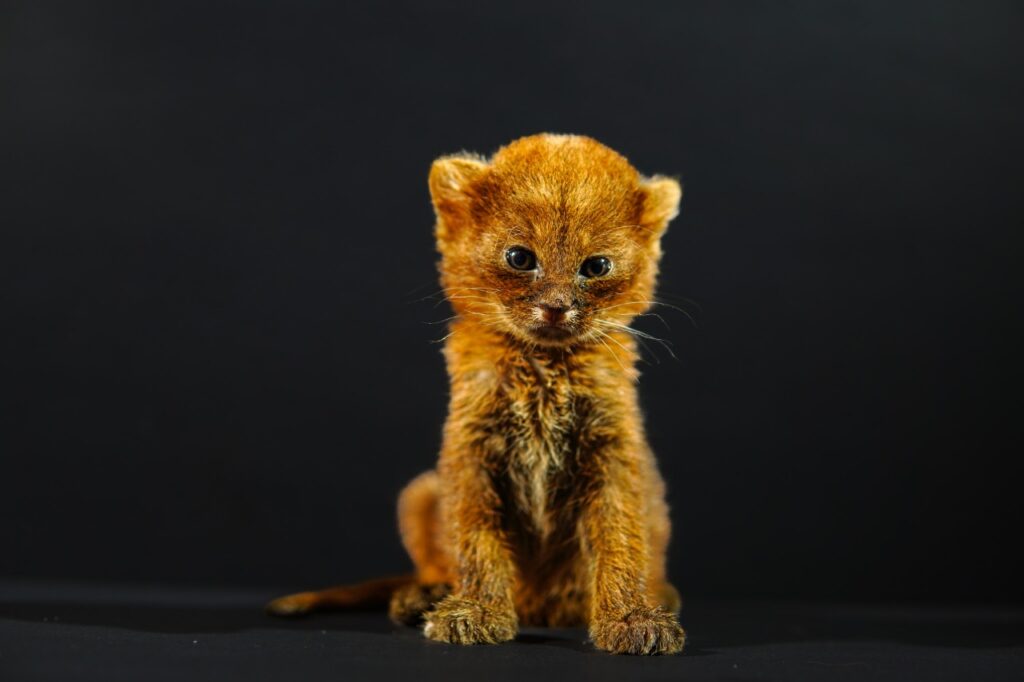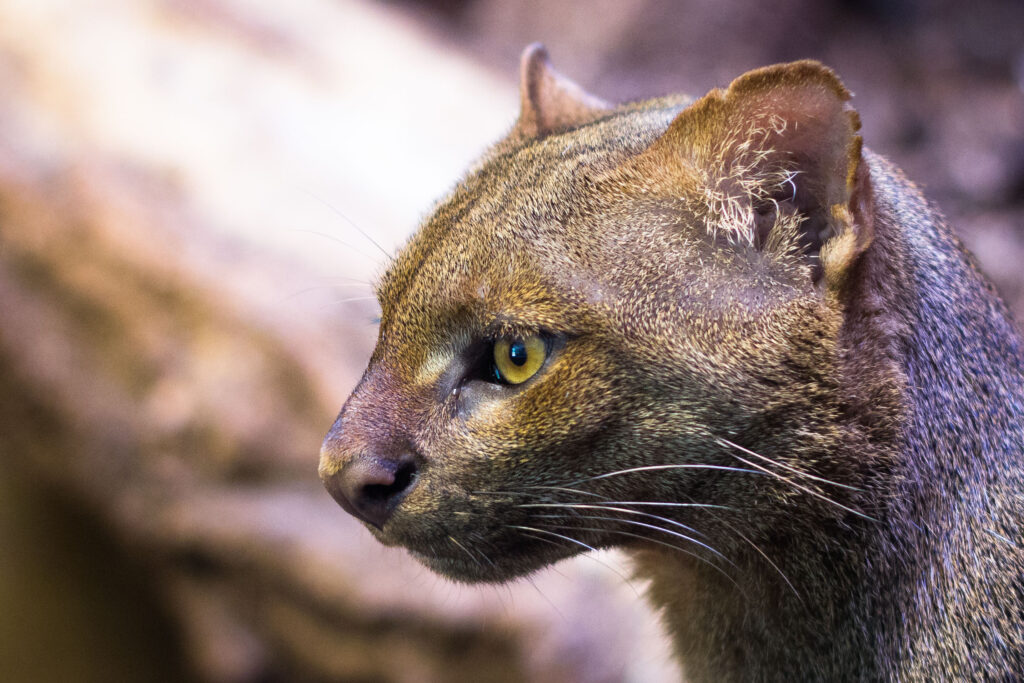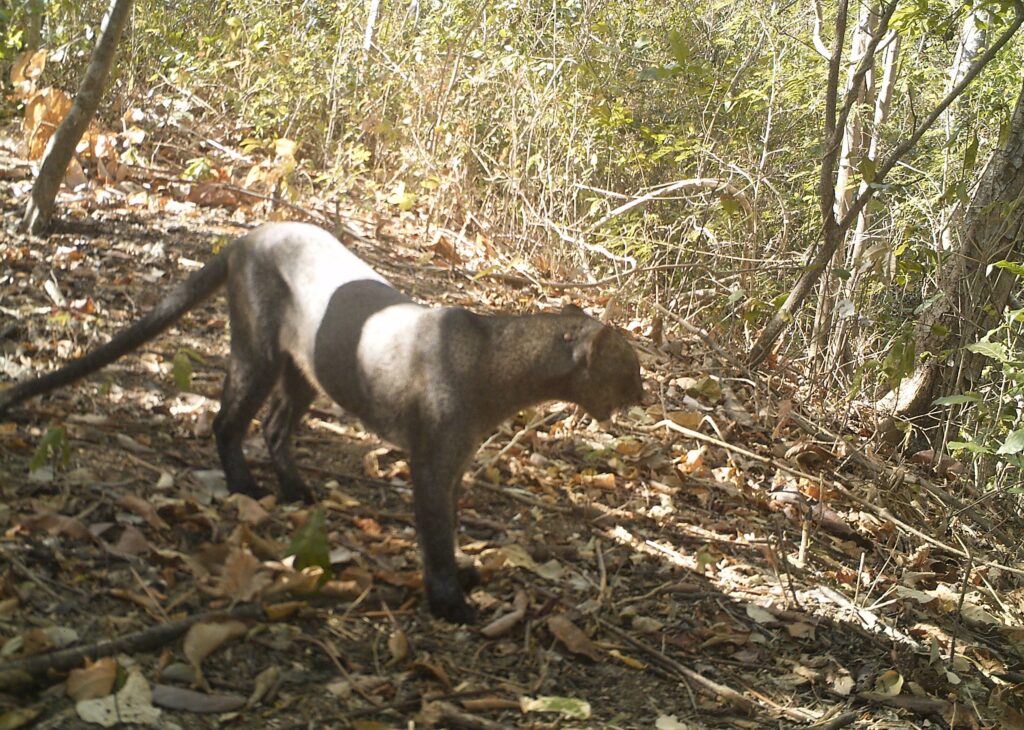The world is full of wonderful animals you’ve likely never heard of. The yawaum’di, gato colorado, gato moro, león breñero, leoncillo, tigrillo. The eyra, gato-mourisco, gato-preto, gato-vermelho and maracajá-preto.
Actually, all those are the same thing — known to English speakers as the jaguarundi. Read on to learn more, such as what it has in common with ocelots, weasels, and tayras.

Jaguarundi kitten photo by MARN
Distinctive Characteristics of the Jaguarundi
The jaguarundi is a medium-sized cat of slender build and uniform coloration that looks very different from other neotropical cats, which are usually spotted. This has been attributed to variations in its genetics: the jaguarundi has 38 chromosomes, unlike the 36 in other small New World cats. In fact, a jaguarundi’s chromosomes resemble those of Old World cats such as the leopard cat (Prionailurus bengalensis).

Footage by Paso Pacífico
Uniform Coat Colors and Color Spectrum
A jaguarundi’s coat is uniformly colored, with at most a few faint markings on the face and the belly. Juveniles and some adults have cougar-like black and white marks on the lips and the snout. Jaguarundis can be two types of colors: either gray (blackish to brownish-gray fur) or red (fox-red to chestnut). These colors used to be considered different species! However, now, we know that these colors are on a spectrum. A litter of jaguarundi kittens can have several different colorings.
Donate Now – Help protect the jaguarundi and its habitat by making a donation today!
Physical Features and Size Comparison
A blackish-brown jaguarundi superficially resembles a tayra (Eira barbara), but it does not have the tayra’s clear, yellowish patch on the throat. The reddish jaguarundi is seen more often in dry, open areas.
Around twice as large as a domestic cat, a jaguarundi shares several features with mustelids like otters and weasels. It has an elongated body with relatively short legs, a small, narrow head, small, round ears, a short snout, and a long, muscular tail. Males are slightly larger than females.

Captive jaguarundi by Cloudtail the Snowleopard on Flickr. Used under CC BY-NC-ND 2.0 DEED.
Habitat and Adaptability
It is hard to confirm numbers of these cats, as they are very elusive, but the last confirmed sighting in the USA was 1986 in Brownsville, Texas. That specimen was roadkill! More stable populations are southward. While loss of habitat has endangered them, these cats have proved more resilient than jaguars due to their adaptability. Jaguarundis can hunt both day and night, and live in many different types of habitat including deserts, deciduous forests, rain forests, mangrove swamps, scrubs and savannas. They swim well, can climb trees, and can evade detection more easily due to their small size.
Conservation Efforts and Challenges
In Central America, Paso Pacífico sometimes sees them in our camera traps. Our habitat protection programs benefit them too. We are trying to educate farmers about them, but the jaguarundi has a particular taste for chickens, so it’s a hard task.
Help protect jaguarundis today!

Take Action for the Jaguarundi
- Support Conservation: Consider donating to organizations like Paso Pacífico to help protect the habitat of jaguarundis and other wildlife.
- Spread Awareness: Share this post with your friends and family to raise awareness about the unique jaguarundi and the importance of conservation.
- Report Sightings: If you ever spot a jaguarundi or have information about their presence, report it to local wildlife authorities to contribute to their conservation efforts.